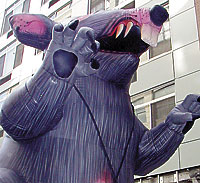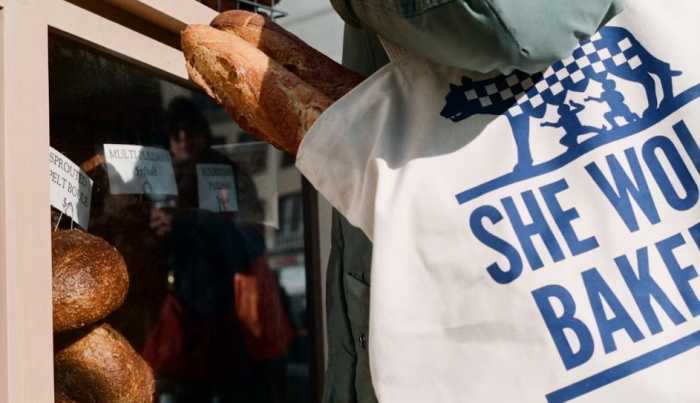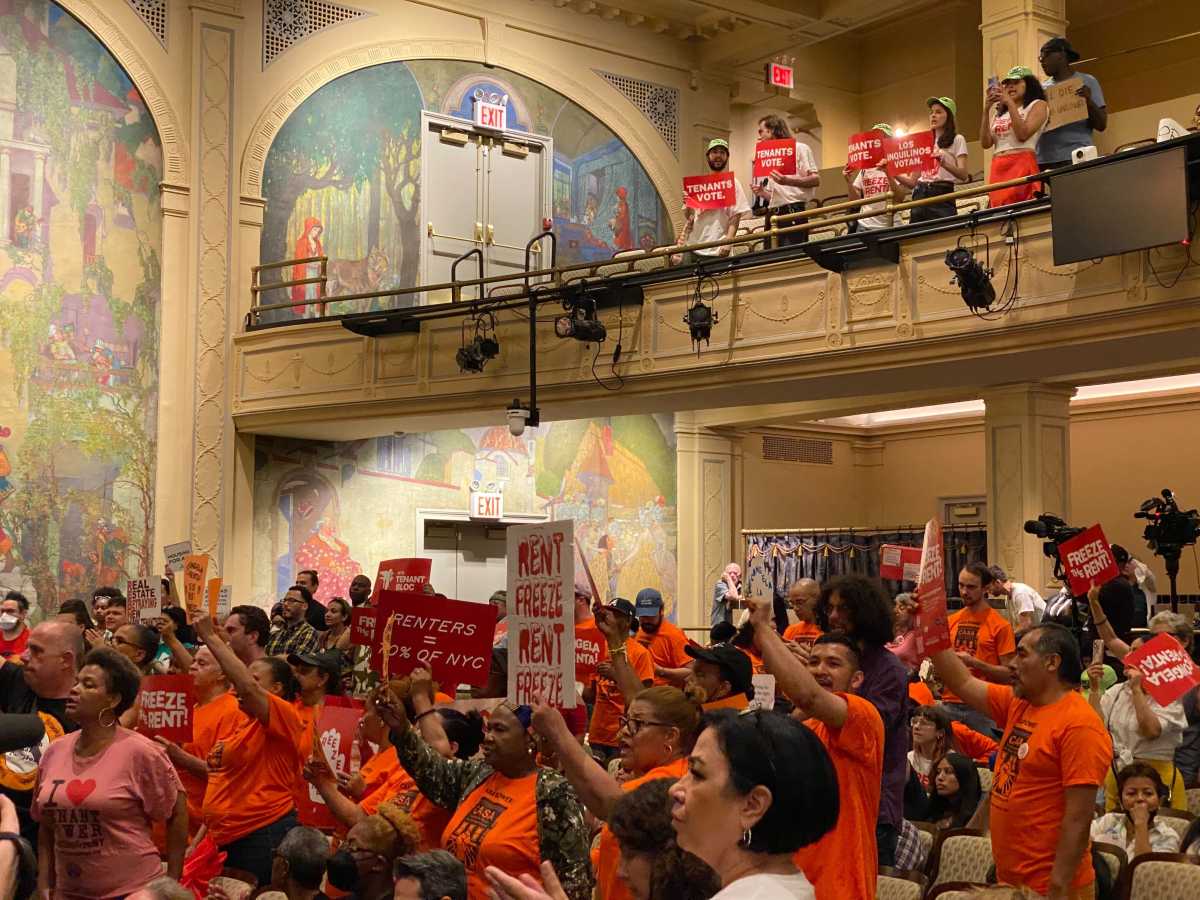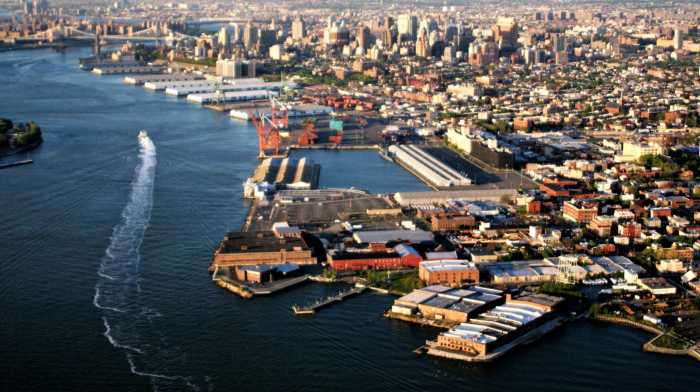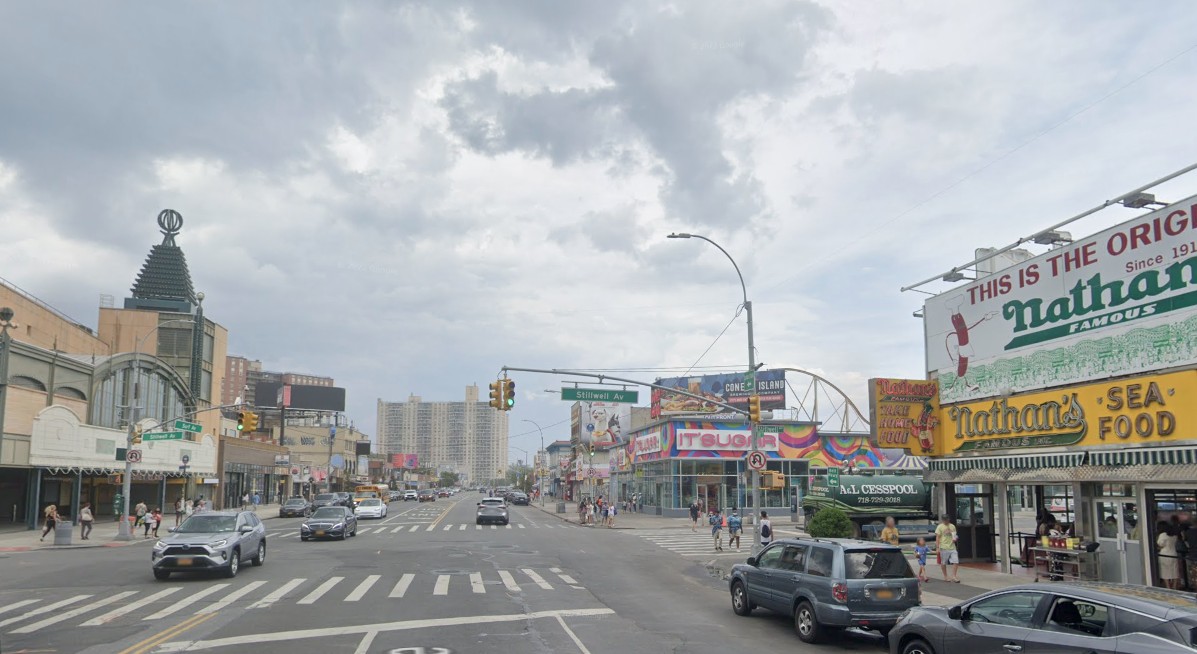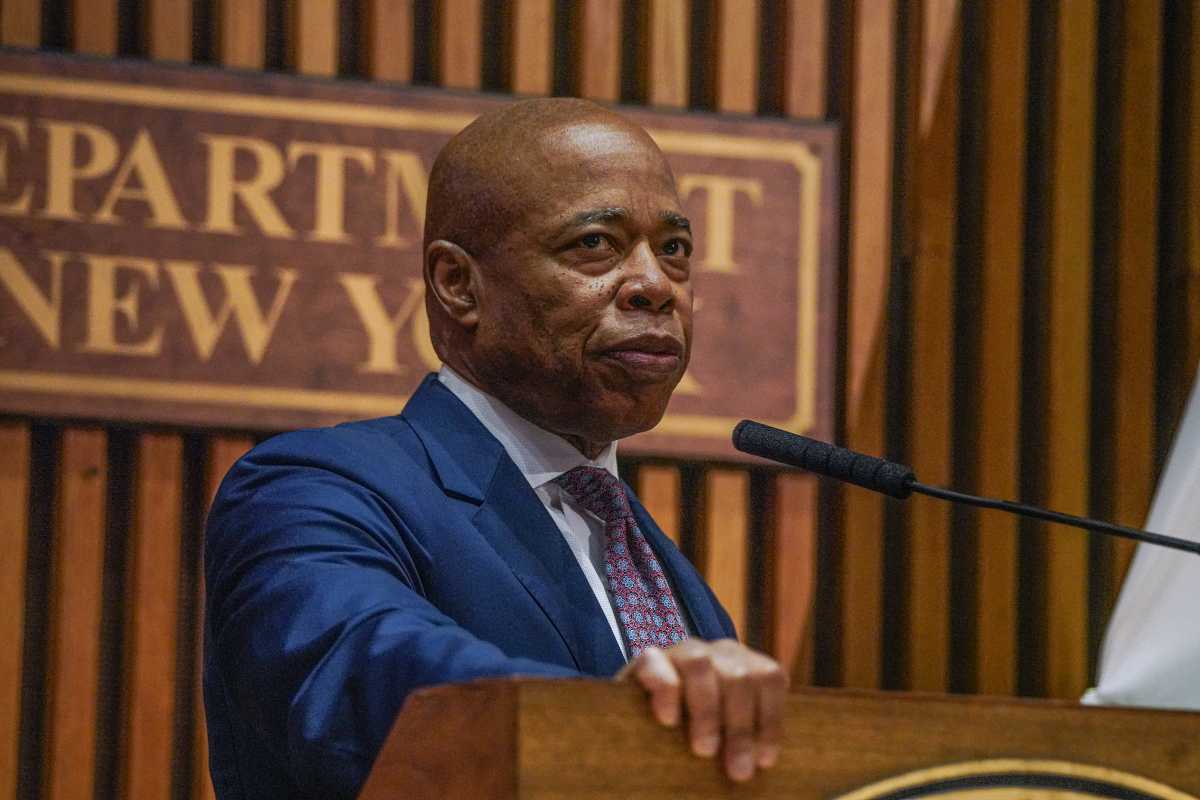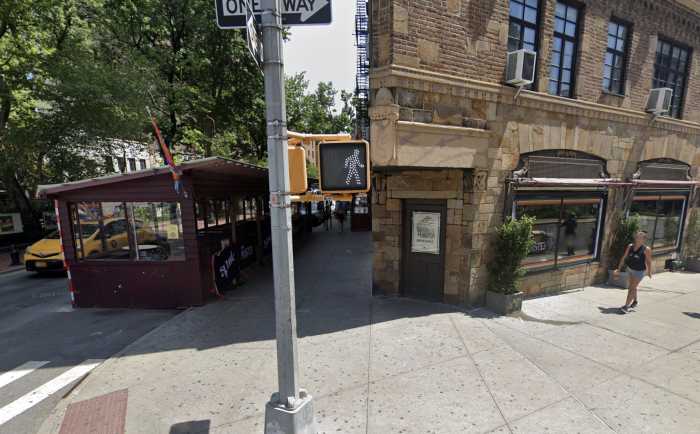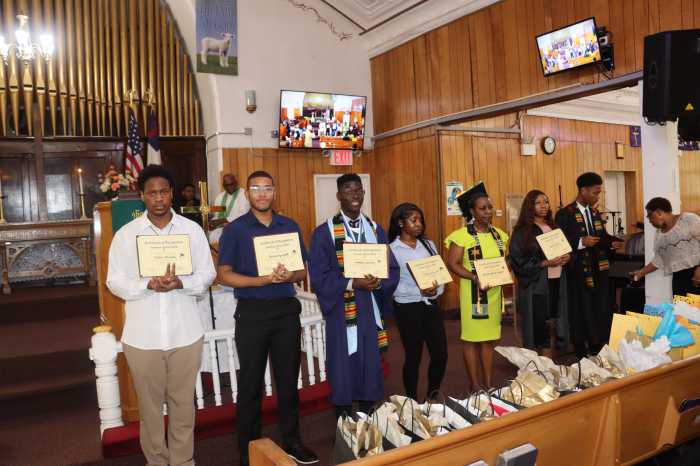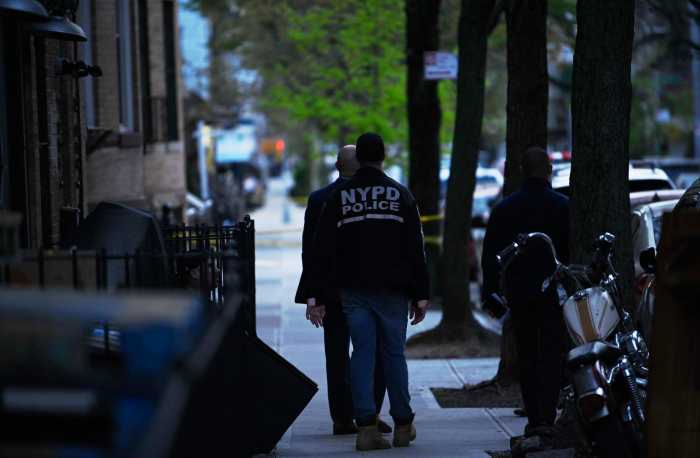While some New Yorkers still follow the jingle’s advice and “look
for the union label,” you won’t find one affixed to Brooklyn’s
construction boom.
Last year in Brooklyn, the Department of Buildings awarded more construction
permits than it had in any year since the 1973. The vast majority of these
projects are being built by non-union laborers.
“We’re being hammered,” said Anthony Pugliese, organizer
of New York District Council of Carpenters.
During Brooklyn’s last construction boom in the late 1960s, construction
union membership was around 40 percent nationwide. Now, it’s 13 percent.
Locally, the result is that only 50 or 60 of the 4,000 residential construction
projects green-lighted last year were built by union hands, according
to the carpenters union.
Union organizers see this as a historic crossroads in the labor movement:
After all, the next 10 years will bring more construction jobs to the
city than any period since World War II, according to deputy mayor Dan
Doctoroff.
Yet the trend is clearly moving away from union labor, leaving organizers
little to do but pump up their giant rats and walk around with picket
signs, as they did this week at locations in DUMBO and the South Slope.
“It’s just plain wrong that they are building these huge, 100-unit
buildings without unions,” groused Joe Rizzo, a Laborers’ International
Union organizer who spent this week protesting the construction at 84
Front St.
The building’s developer, Shaya Boymelgreen, was persuaded to go
union at one of his building sites in Manhattan. But at his luxury residential
developments in DUMBO and on Smith Street in Carroll Gardens, he did not
feel similarly compelled.
Part of the reason, experts said, is because Manhattan’s labor locals
are more powerful politically, and the projects themselves have traditionally
been larger.
Yet even as Manhattan-sized buildings are increasingly being built in
Brooklyn, union power is waning in the borough.
Hiring union laborers does considerably ramp up the cost of a construction
project, but there is still a huge political benefit to using union muscle,
union leaders say.
Pugliese estimates that his union will get 10,000 jobs at Bruce Ratner’s
Atlantic Yards megadevelopment — which won Ratner union support.
“The construction industry has sway over elected officials and its
support [of the project] has a major impact,” said Councilwoman Letitia
James (D-Prospect Heights), who opposes the Atlantic Yards project.
Yet Ratner remains the exception to Brooklyn’s growing addiction
to non-union construction. As a result, Brooklyn has become the hot-sheets
motel for an odd case of strange bedfellows: union construction workers
are now teaming up with opponents of over-development to halt or harass
non-union projects.
James, for example, has been spotted recently walking the picket lines
below the inflatable gray rat, and teaming up with the very unions she
battled over Atlantic Yards.
“We talk about overdevelopment and some of them really understand,”
said James. “They don’t want it where they live either.”
James’s point was on display this week in the South Slope, where
the non-union construction of some 30 new residential projects has incited
protest from neighbors — whether they draw union or non-union paychecks.
Crude messages slamming developer Isaac Katan — such as “Katan
is Satan” — were spotted on vans parked next to a 12-story condo
at 162 16th St., which is being built by non-union workers.
Protest organizer Bo Samajopoulos has two, seemingly conflicted, gripes:
He doesn’t want the too-tall condo in his neighborhood — but
if it must go up, he wants his workers on the job.
Union workers.
“[The builder] is exploiting workers with no insurance and little
or no training,” Samajopoulos said, actually using the term “overdevelopment”
to describe the building — a surprising word choice for a union builder.
“I kept out of the fight at first,” he said. “Unions usually
want big work, but who wants to live next to a monstrosity, especially
if it’s a monstrosity built by men and women making $10 an hour?”
Pugliese considers non-union labor to be a public safety issue. In the
past year, two day-laborers were killed on job sites in Brooklyn, including
one who was fatally crushed by an 800-pound beam as he laid the foundation
of a condo building on 20th Street in the South Slope.
And this week, a worker was carried off by co-workers and placed into
a car-service taxi at the 16th Street site. Witnesses believe he was shaken
up in a construction accident, but the foreman on the job denied it, telling
The Brooklyn Papers to “have a nice day.”


